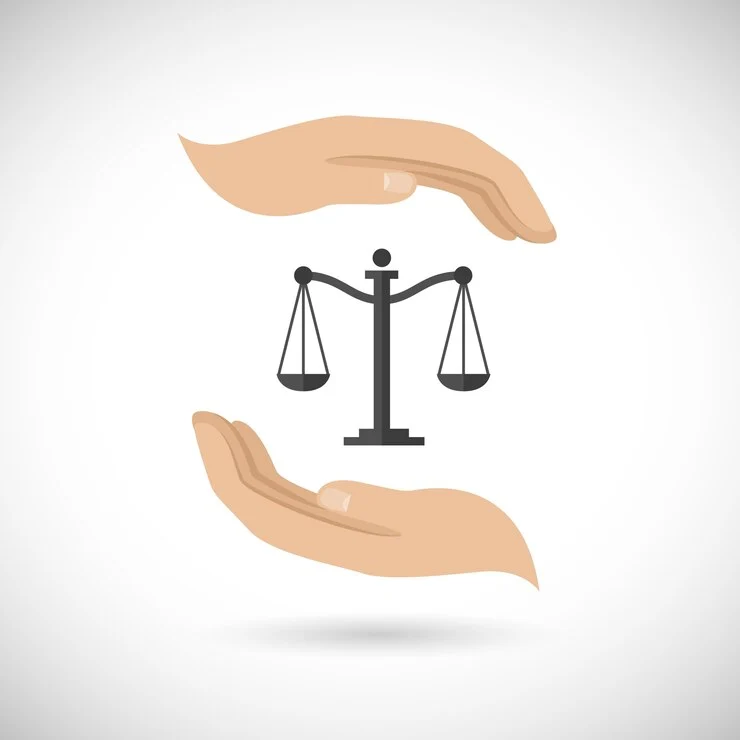Key Takeaways:
- Always provide an original reference when using text from an original source material to avoid accusations of word-for-word copying.
- Properly citing online sources is crucial in maintaining the integrity of your work and giving credit to the original authors.
- Paraphrasing instead of direct duplication from original source material helps demonstrate your understanding and adds originality to your writing.
- Utilising quotation marks and citations when borrowing from an original reference ensures ethical writing practices and respects intellectual property.
- Failing to cite online sources or original source material accurately can lead to severe consequences, including loss of credibility and legal issues.
In the realm of academia, journalism, and creative writing, plagiarism is a critical issue that can tarnish reputations, derail careers, and lead to serious legal repercussions.
Among the various forms of plagiarism, word-for-word plagiarism stands out due to its blatant and easily identifiable nature. This comprehensive guide aims to delve deep into the concept of word-for-word plagiarism, exploring its definition, examples, consequences, and strategies for avoidance.
Protect Your Brand & Recover Revenue With Bytescare's Brand Protection software
Definition of Word for Word Plagiarism
Word-for-word plagiarism occurs when an individual copies a text verbatim from a source without proper attribution.
According to the Indiana University School of Education (2014), word-for-word plagiarism is indeed committed when someone copies a string of 7 or more words from an original work and presents it as their own.
It’s important to note that even if a student changes a few words using synonyms but keeps the sentence structure largely the same, it can still be considered plagiarism.
It can manifest in several ways:
- Direct Copying: This is the most blatant form, where a writer copies a section of text verbatim from a source without using quotation marks or providing any credit to the original author.
- Patchwriting: This involves copying sentences or phrases from various sources and piecing them together to create a new “work.” While the overall structure might be different, the borrowed elements remain unattributed.
- Mosaic Plagiarism: Similar to patchwriting, this method involves interweaving copied phrases with the writer’s own words without proper citation. While some originality may be present, the core ideas and expressions still belong to another author.
Examples of Word to Word Plagiarism
To better understand word-for-word plagiarism, consider the following examples:
Academic Papers: A student copies several paragraphs from a scholarly article into their research paper without quoting or citing the original source. This misleads readers into thinking that the student generated those ideas and wording.
Journalism: A journalist lifts entire sections from a competitor’s news article and incorporates them into their own report. This not only undermines the credibility of the journalist but also violates ethical standards.
Online Content: A blogger copies and pastes a significant portion of another blog post into their own article. This practice can lead to copyright infringement and damage the blogger’s reputation.
Protect Your Brand & Recover Revenue With Bytescare's Brand Protection software
Consequences of Word-for-Word Plagiarism

The consequences of word-for-word plagiarism can be severe, impacting individuals and organisations alike. Some of the key repercussions include:
- Academic Consequences: In educational institutions, content misappropriation can result in failing grades, suspension, or even expulsion. Academic integrity policies are stringent, and students found guilty of intellectual theft may face long-term consequences on their academic records.
- Professional Repercussions: In the professional world, content duplication can lead to job termination, loss of professional licenses, and damaged reputations. Employers value originality and ethical behavior, and plagiarism undermines both.
- Legal Ramifications: Plagiarism can lead to legal action, particularly when it involves copyrighted material. Authors and publishers may sue for copyright infringement, leading to hefty fines and legal fees.
- Erosion of Trust: For writers, journalists, and researchers, trust is paramount. Intellectual theft erodes trust with readers, peers, and collaborators, making it difficult to rebuild professional relationships.
Detection of Word-for-Word Plagiarism
Detecting word-for-word plagiarism has become increasingly sophisticated with the advent of technology. Several tools and techniques are used to identify instances of direct copying:
- Plagiarism Detection Software: Tools like Bytescare, Turnitin, and Grammarly can scan documents and compare them against vast databases of published works to identify matching text. These tools are widely used in academic and professional settings.
- Manual Comparison: Educators and editors often manually compare suspect texts with known sources to detect plagiarism. This method requires keen attention to detail and familiarity with the subject matter.
- Citation Analysis: By analysing citations and references, reviewers can identify inconsistencies and potential sources of plagiarised content. Missing or incorrect citations often raise red flags.
Protect Your Brand & Recover Revenue With Bytescare's Brand Protection software
Avoiding Word-for-Word Plagiarism
Avoiding word-for-word plagiarism is essential for maintaining academic and professional integrity. Here are several strategies to ensure originality in your work:
Understand Proper Citation: Familiarise yourself with citation styles (APA, MLA, Chicago, etc.) and use them correctly. Proper attribution involves quoting, paraphrasing, and citing sources accurately.
Use Quotations: When using exact words from a source, enclose the text in quotation marks and provide an appropriate citation. This clearly indicates that the words are not your own.
Paraphrase Effectively: Paraphrasing involves rephrasing the original text in your own words. Ensure that the paraphrased content is sufficiently different from the source while maintaining the original meaning. Always cite the source even when paraphrasing.
Develop Original Ideas: Strive to contribute your own insights and analysis rather than relying heavily on existing sources. This not only avoids intellectual theft but also enhances the value of your work.
Keep Track of Sources: Maintain detailed notes on all sources you consult during your research. This practice helps you accurately attribute information and avoid unintentional content duplication.
Ethical Considerations
Beyond the technical aspects of plagiarism detection and avoidance, it is crucial to understand the ethical implications of word-for-word plagiarism. Plagiarism is fundamentally an issue of honesty and integrity.
By presenting someone else’s work as your own, you deceive your audience and undermine the trust that is essential in academic and professional relationships.
Case Studies

Examining real-world cases of word-for-word plagiarism can provide valuable insights into its impact and the measures taken to address it:
Jayson Blair (The New York Times): In 2003, Jayson Blair, a reporter for The New York Times, was found to have committed numerous instances of intellectual theft and fabrication. Blair copied text from other publications and presented it as his own reporting. The scandal led to his resignation and prompted widespread criticism of The New York Times’ editorial practices.
Melania Trump: In 2016, Melania Trump’s speech at the Republican National Convention included passages that were nearly identical to Michelle Obama’s speech from 2008. The plagiarism sparked controversy and highlighted the importance of originality in public discourse.
University of Virginia: In 2001, more than 100 students at the University of Virginia were accused of content misappropriation in a physics class. The incident led to a review of the university’s honor code and disciplinary actions against the students involved.
The Role of Institutions
Educational institutions, publishers, and employers play a crucial role in preventing and addressing word-for-word plagiarism. Some measures they can take include:
- Education and Training: Institutions should provide comprehensive training on academic integrity, proper citation practices, and the consequences of intellectual theft. Workshops, seminars, and online resources can help educate students and employees.
- Clear Policies: Establishing clear and detailed policies on plagiarism is essential. These policies should outline the types of content misappropriation, consequences for violations, and procedures for addressing suspected cases.
- Support Systems: Providing support for students and employees, such as writing centers, plagiarism check tools, and access to librarians, can help individuals understand and avoid intellectual theft.
- Consistent Enforcement: Institutions must consistently enforce their plagiarism policies to maintain credibility. This includes conducting thorough investigations of suspected cases and applying appropriate penalties.
What’s Next?
Word-for-word plagiarism is a serious offense that can have lasting consequences for individuals and organisations. Understanding its definition, examples, and repercussions is crucial for anyone involved in writing, research, or publishing.
By adhering to ethical standards, using proper citation practices, and fostering a culture of originality, we can combat intellectual theft and uphold the integrity of our work.
Institutions, educators, and professionals must work together to educate, detect, and address plagiarism, ensuring that creativity and honesty remain at the forefront of our intellectual endeavors.
To ensure your work is original and free from duplicacy, consider using a Bytescare online plagiarism checker. Book a demo today to safeguard your academic integrity and avoid potential pitfalls related to content duplication.
The Most Widely Used Brand Protection Software
Find, track, and remove counterfeit listings and sellers with Bytescare Brand Protection software

FAQs
What is plagiarism of words?
Plagiarism of words, also known as word-for-word copying or direct duplication, occurs when an individual takes text verbatim from a source without proper attribution. This involves reproducing exact phrases, sentences, or paragraphs from another author’s work and presenting them as one’s own, without quotation marks or citations.
How many words is word-for-word plagiarism?
There isn’t a universally agreed-upon number of words that defines word-for-word plagiarism. While some institutions, like Indiana University School of Education 2014, might set a threshold of 7 consecutive words, it’s not a universal rule.
What is the difference between paraphrasing and word-for-word plagiarism?
Paraphrasing involves rephrasing the original text in one’s own words while maintaining the original meaning. Proper paraphrasing also requires citing the source. Word-for-word duplication (or direct plagiarism), on the other hand, involves copying the text exactly as it appears without changes and without proper attribution. Paraphrasing demonstrates understanding and original thought, whereas direct copying is a form of intellectual theft.
Does plagiarism have to be word for word?
No, plagiarism does not have to be word-for-word. It can also occur when someone paraphrases too closely to the original text without proper citation, uses another person’s ideas or structure without attribution, or fails to acknowledge the source of their information. Any form of presenting someone else’s work or ideas as one’s own, without proper credit, constitutes plagiarism.
Is it word-for-word plagiarism if there is no reference?
Yes, if text is copied exactly from a source without providing a reference, it is considered word-for-word duplication. Proper referencing is crucial to give credit to the original author and distinguish between one’s own work and the borrowed text.
Is it plagiarism if I use the same words as my source but I change the order of the sentences around?
It depends. If you’re simply rearranging a few words without demonstrating your understanding or adding anything new, it could still be considered a form of copying. However, if you use the source as a springboard and significantly alter the sentence structure while conveying the idea in your own words, it might be acceptable (as long as you still cite the source).
Can a single word be plagiarised?
While it is unlikely for a single common word to be considered intellectual theft, unique terms, coined phrases, or jargon specific to an author’s work can be plagiarised if used without proper acknowledgment.
Context and originality of the term are important factors in determining whether the use of a single word constitutes duplication.
Ready to Secure Your Online Presence?
You are at the right place, contact us to know more.

